By David Dodge
“The ‘15–minute city’ may be defined as an ideal geography where most human needs and many desires are located within a travel distance of 15 minutes.”
The idea of the 15-minute city was popularized by Mayor Anne Hildago of Paris who was apparently inspired by the French-Columbian scientist Carlos Moreno and later adopted by the C40 network of mega cities committed to addressing climate change.
Edmonton award-winning architect Shafraaz Kaba defines it more narrowly as “very simply it’s a place where you can get all of the immediate needs and amenities within a 15-minute walking distance of your home.”
Edmonton city planning engineer Howaida Hassan clarifies. “We’re not talking about 15-minute driving, you’re talking about 15-minute walking, biking, or taking transit to what you need to do.”
The car as hero and villain
The car it turns out is both a hero and the main villain in the story of how we built sprawling, unsustainable metropolises dissected by extensive networks of roads that separate people in communities and people from many of the things they need or want.
We saw the car as an incredible invention, our ticket to freedom and we embraced it “wholeheartedly and built our cities around it,” says Hassan. “It’s a cautionary tale.”
The 15-minute city is not only part of the solution to urban sprawl and neighbhourhoods fractured by endless freeways that form Berlin walls between our communities. As it turns out it is also part of the recipe for building climate-resilient, more efficient and people-friendly cities.
Edmonton’s new City Plan embraces the 15-minute city concept and confronts climate change and urban sprawl right in the first of five big moves in the plan under the innocuous title: “Greener as we Grow.”
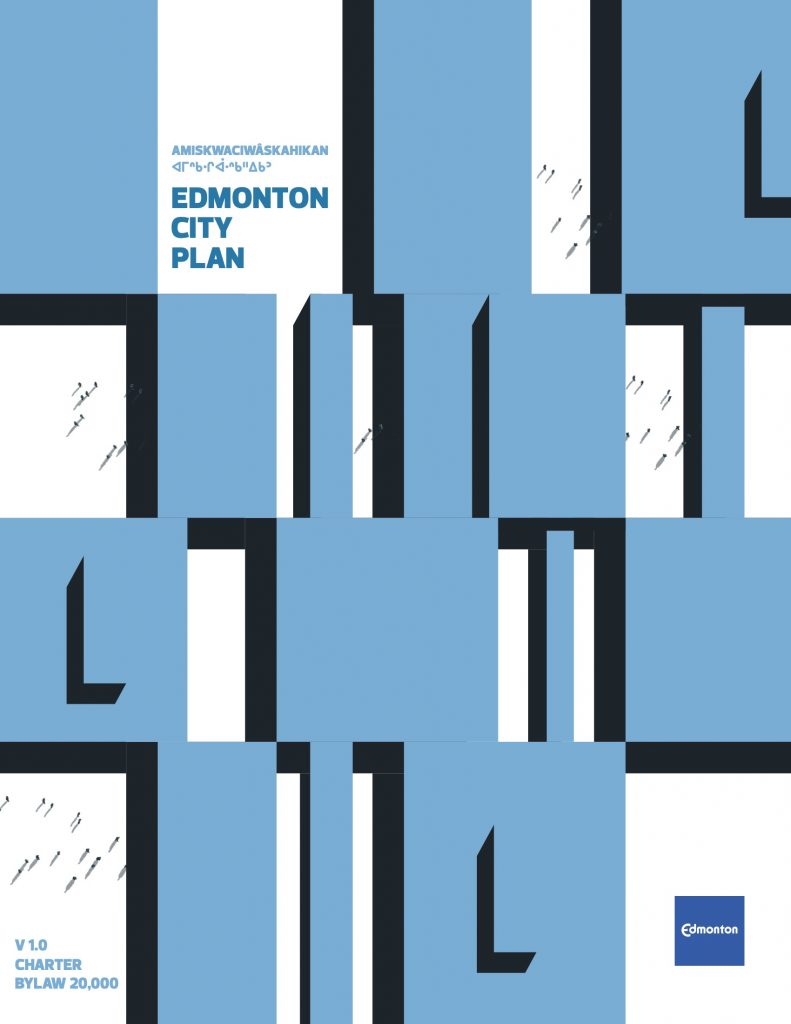

Edmonton’s plan for a net-zero future
“You hit it right on the head, David, like actually, uh, our understanding is that this is the first official plan in Canada that embeds, its carbon budgets into its plan,” says Hassan, a City of Edmonton engineer that helped draft the plan.
“That’s a big deal because it means that everything within the plan has to be working towards that goal…that we maintain a [carbon] budget of 135 megatonnes, that we have net-zero emissions per person and that we plant two million trees.”
Edmonton is an oil capital and a city with among the highest greenhouse gas emissions per capita (20 tonnes) and yet it is aiming to take that to just three tonnes per capita, the level needed to achieve emissions reductions consistent with the Paris Climate Accord.
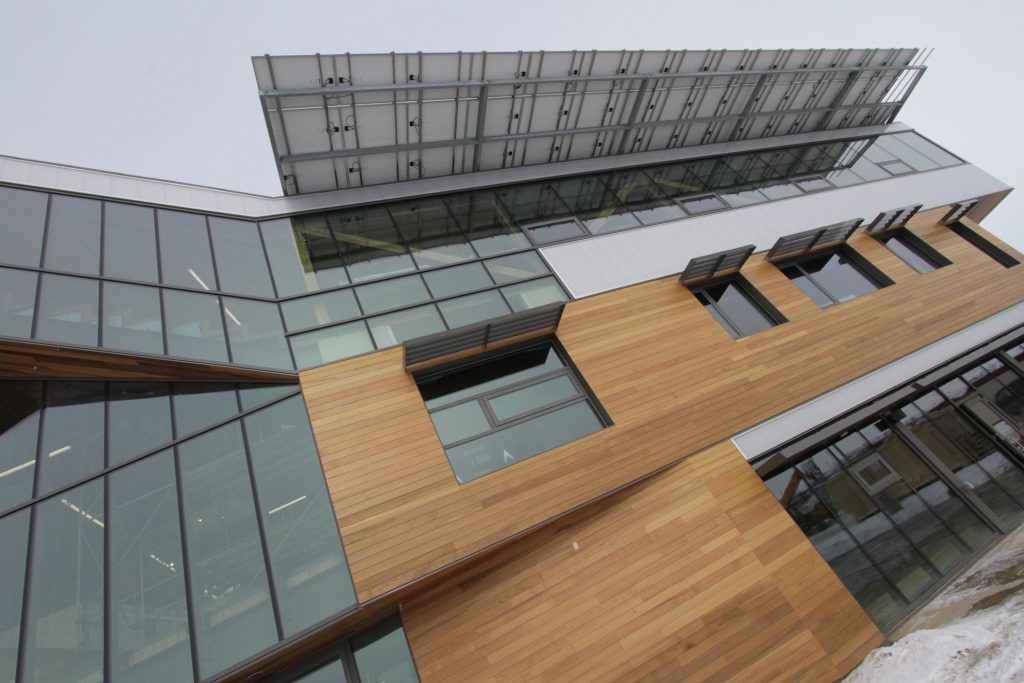
Edmonton’s path to zero emissions
In 2018 Alberta’s capital city hosted the first IPCC Cities and Climate Change Science conference in the world and issued the “Edmonton Declaration” which calls on cities to use science-based targets and reduce their emissions to limit global warming to 1.5 degrees.
Then in 2019 the city declared a climate emergency and instructed its staff to update its much-lauded Community Energy Transition Strategy to the 1.5-degree threshold.
The new City Plan sets the tone for a zero-emissions city calling for 50 per cent of new development close to the city’s core, shifting people’s transportation from cars to walking, cycling and transit by creating 15-minute districts where people can half most of their needs met within 15 minutes of home.
“The city plan is is a very broad, long-term document, plans out city out to 2 million people. So it sets us up for those big long-term goals. And then the Energy Transition Strategy gets down to the brass tacks of how do we do it,” says Hassan.
The Community Energy Transition Strategy and Action Plan calls for emissions reductions across the board by electrifying transportation, getting buildings to net-zero, and by using clean energy.
15-Minute Cities
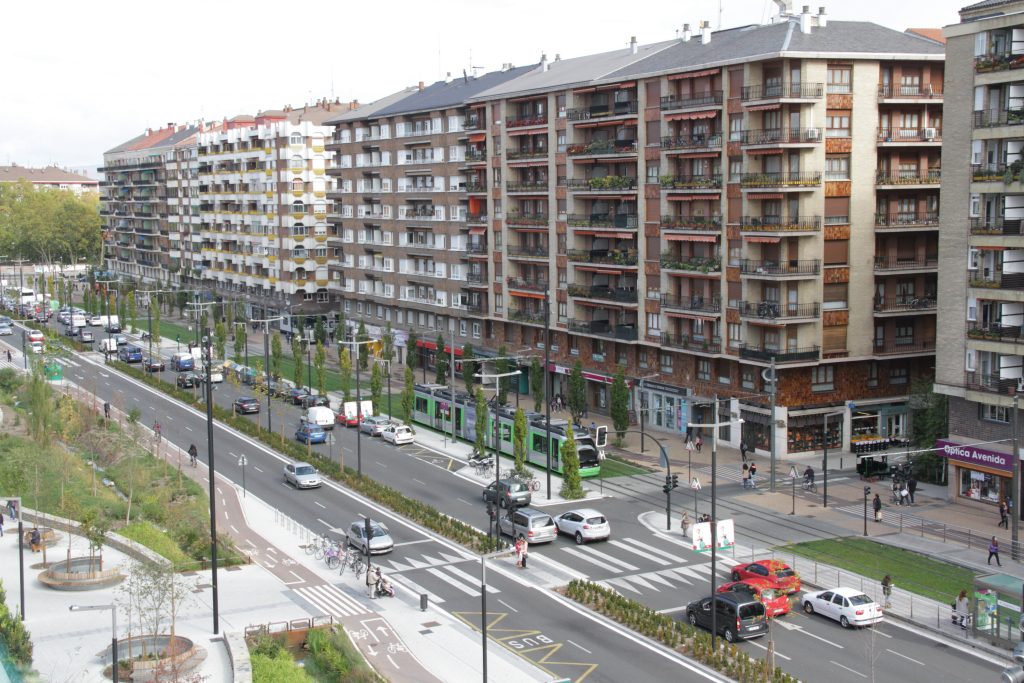
“It means that you can walk, bike, transit to a park, to your grocery store, or to a coffee shop. …you should be able to do all of the most common things that you do in your day within your district without having to use a car,” says Hassan.
That is what planners call mode-shift and going from 22 to 50 per cent walking, cycling and transit is a big goal and a departure from current rates of 78 per cent using cars, 11 per cent walking, nine per cent using transit, and just two per cent cycling.
“It doesn’t mean you won’t use a car,” says Hassan, but under the new plan more people will live in the core, close to what they need and many will find they can get by with one car instead of two and increasingly that car will be electric.
Studies vary, but ditching one car can save you $9,000 per year. And since you are living closer to shopping, your local pub, green spaces, and other day-to-day necessities you save plenty of an under-valued commodity – time.
“Oftentimes when people think of densification, redevelopment, or intensification, they just picture kind of concrete upon concrete, with nothing green in there,” says Hassan.
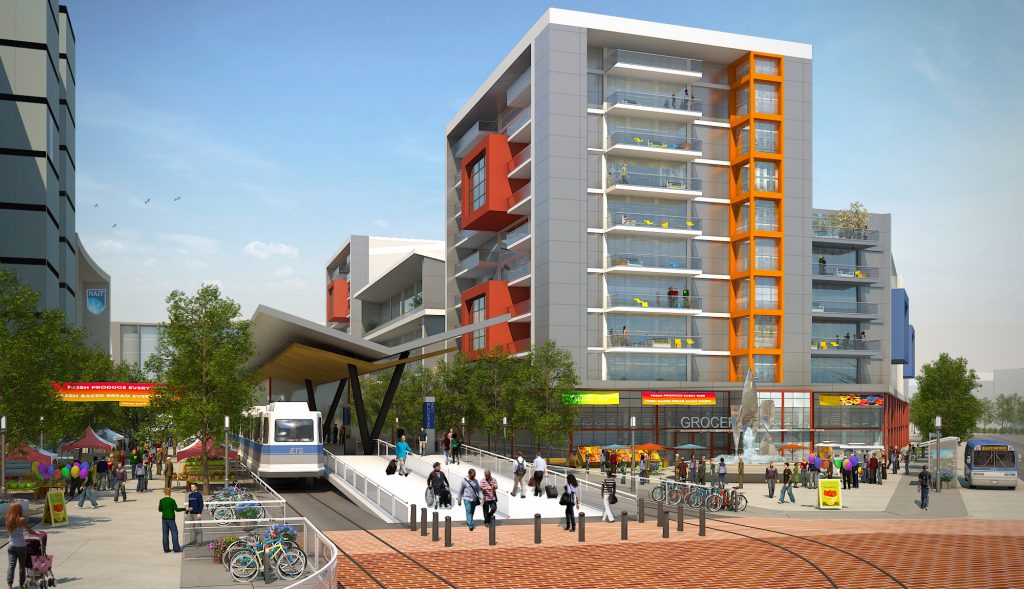
Blatchford: A model 15-minute Carbon Neutral Community
To this end, the City of Edmonton began developing Blatchford a model carbon-neutral community that will eventually host 30,000 people. The community will feature townhomes and a diversity of higher density structures along with plenty of public green space (parks, a lake, walking and bike paths, playgrounds, and community gardens).
“It is so, so important. I mean, we’re human beings. We thrive off of being near nature and around nature,” says Hassan.
But aside from its modern, people-friendly urban design Blatchford models perfectly the benefits of location, location, location, or as planners say “location efficiency.”
A light rail transit (LRT) station is on-site, there is emerging walking and cycling infrastructure that could get you downtown in 15 minutes. There are food stores, Kingsway Shopping Mall, hardware stores, pubs, a hospital and there is more mixed commercial-residential development planned right in the neighbourhood.
“Blatchford is transformational in so many ways. It embodies a lot of what the city plan is trying to achieve on a neighborhood scale,” says Hassan.
Blatchford even has a Green Building code that requires new homes to be near net-zero ready by design, something Edmonton builders have been pioneering for well over a decade. And it has a district geothermal heating system to efficiently heat homes with low or potentially no emissions.

Building in the core of the city saves money
Edmonton Architect Shafraaz Kaba has worked on some of Edmonton’s most iconic net-zero projects. He recently started a new architecture firm called Ask for a Better World where “We help clients in the built environment, focus on net-zero energy, zero-carbon buildings, and hopefully more regenerative buildings in our city,” says Kaba.
Building a 15-minute city could be good for the tax roll too. As cities sprawl further and future out costs go up.
“It costs a lot of money to build new fire halls, police stations, ambulance services, and even the roads to get there,” says Kaba. And then there are “all of the pipes that deliver our water, our sewage, our natural gas lines, our electricity, all of that takes millions and millions of dollars to expand further and further outwards.”
Focusing on good, people-friendly development in the core of the city “will allow you more time to do what you really enjoy instead of commuting over an hour to work back and forth every day,” says Kaba adding that the pandemic has taught us the value of having local lifestyle opportunities and stronger, more socially connected neighbourhoods.
Building in the core “Just makes good dollar sense, right. When we can make better efficient use of our infrastructure as a city, that’s, that’s truly sustainable growth,” says Hassan.
As Edmonton plans for its next one million residents, it will locate 600,000 inside the city’s Anthony Henday ring road and strive for the goal of zero emissions at the same time.
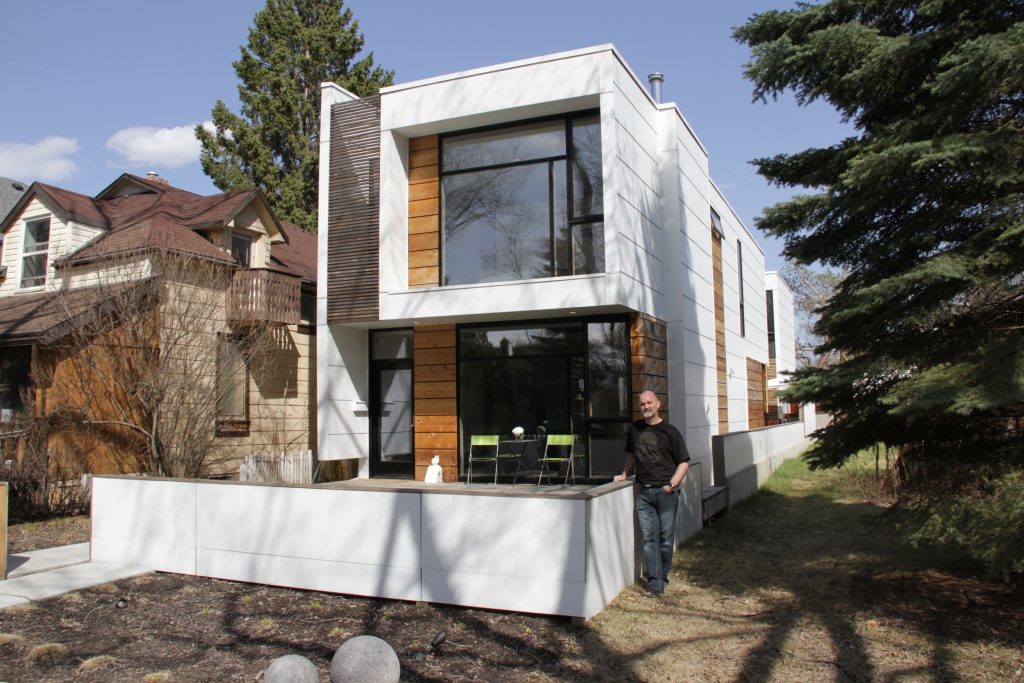
Benefits of infill starting to settle in
Prior to the new city plan in 2010, Edmonton set a goal of reducing urban sprawl by setting an ambitious target of satisfying 25 per cent of growth with infill. The efforts have not been without challenges. Conflicts emerged between people loving the opportunity to build their dream home in beautiful, mature neighbourhoods and existing residents who feared what change would bring.
But people are slowly learning the benefits of infill and the success of the efforts is told in numbers.
“At the time [2010] I think we we’re at 13 per cent [infill], and I thought, ‘Oh my gosh, how are we ever going to get there?’ Do you know what David? In 2020 we hit 30 per cent.”
Whereas in the past things moved at glacial speeds thanks to nimby and political inertia, climate change, energy transition, and even the pandemic are inspiring us to rethink things and get ready for big changes coming at a blinding pace.
The automotive industry has already embraced the electric revolution by moving virtually all of its investment (more than $300 billion) into electric vehicles with more than 500 models due out by 2025. Companies like Capital Power that were once the lords of the coal-fired power industry are closing their coal plants, building renewable energy projects, and pledging to get to net-zero. Global investment in renewables is expected to hit $13.3 trillion, more than 77 per cent of global investment in power generation by 2050.
What once looked like a crazy, impossible goal of cleaning up the grid is now driven by price – solar and wind power are the cheapest ways to generate electricity. Even in the conservative heartland of oil-rich Alberta, there is currently a boom in solar and wind energy projects.
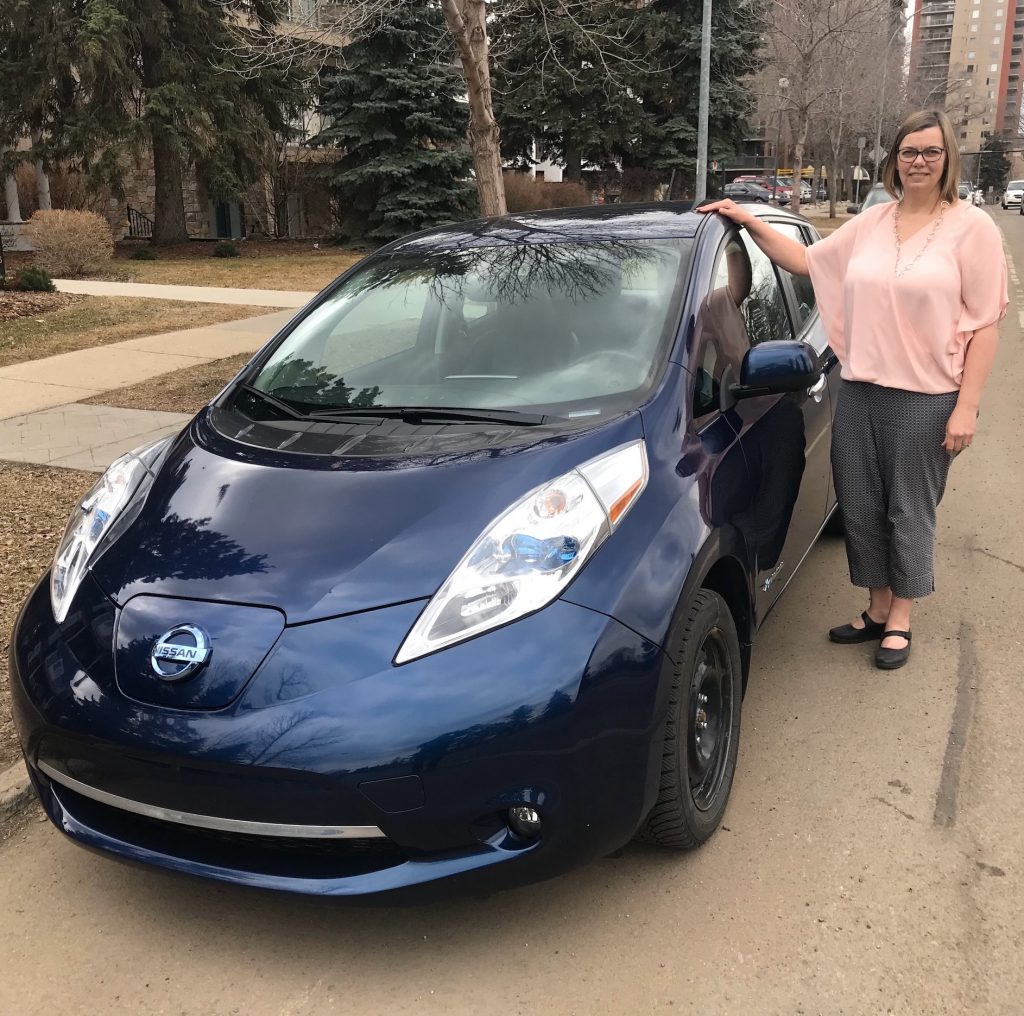
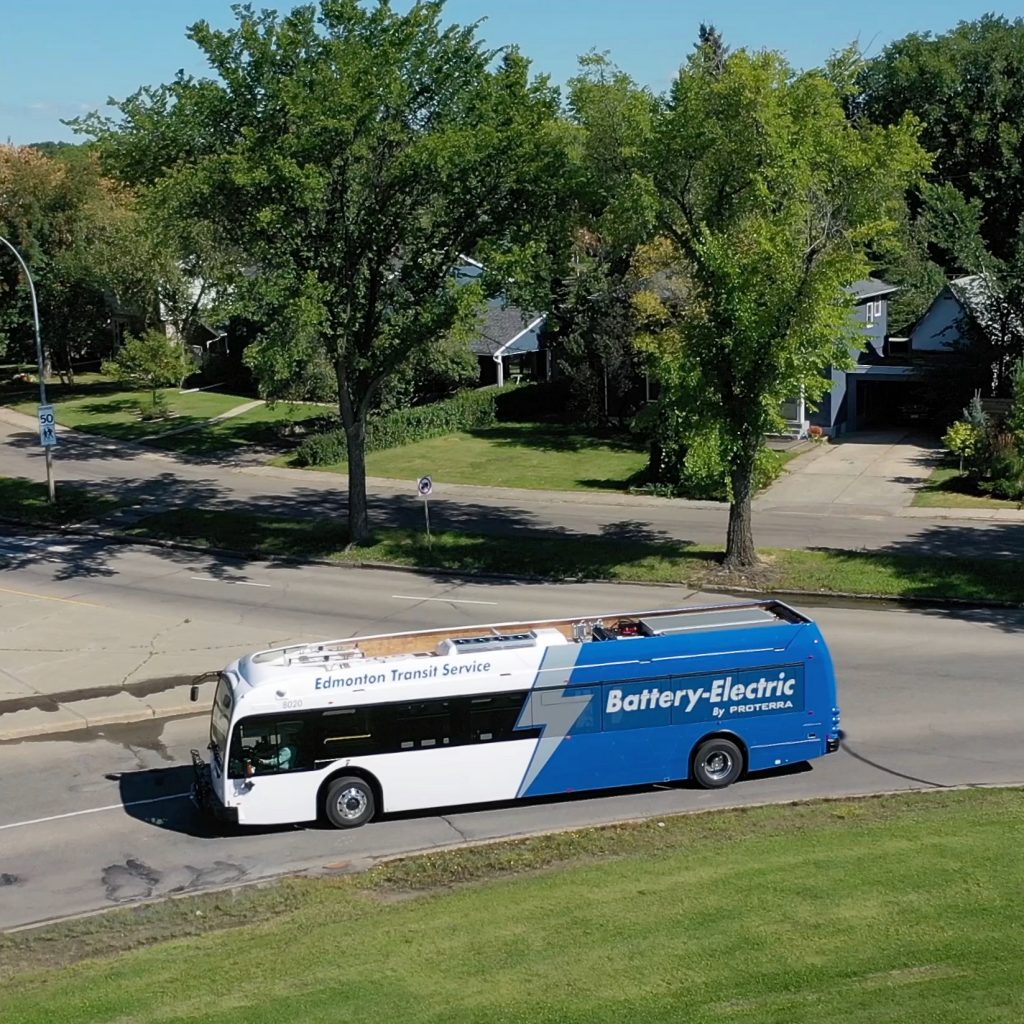
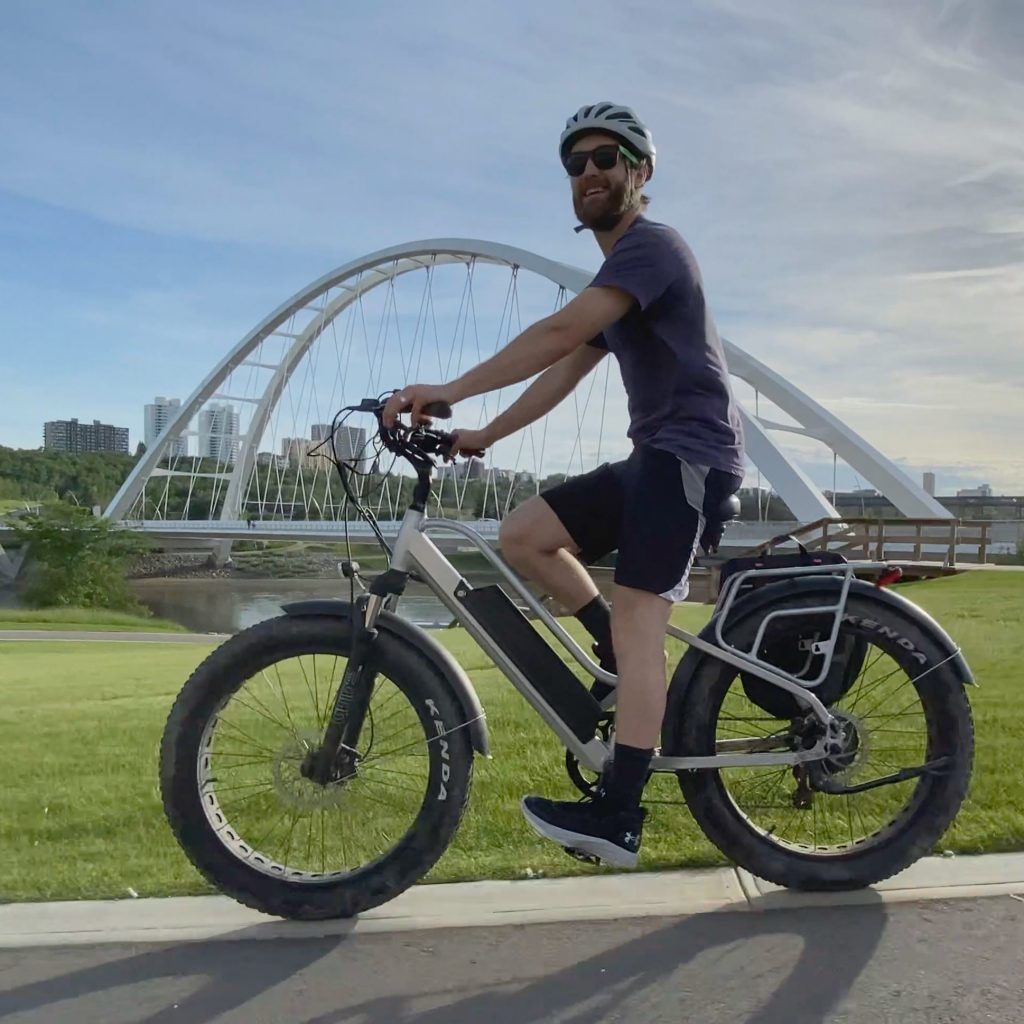
Going electric – A city and its engineer catch the EV bug
Engineer, Howaida Hassan was also the architect of Edmonton’s Electric Vehicle Strategy, and this knowledge inspired a transformation in her family’s vehicle choices. With three hockey-playing kids, they had an old Mazda mini-van and a Smart Car.
First, they purchased a small, short-range BMW I3 electric car which was “great for scooting around town.”
But as their old mini-van approached its sunset years they had a decision to make. Do they look at another gas vehicle, or perhaps a Mitsubishi Outlander Plug-in hybrid?
Eventually, they decided to “go all-electric.” They found a used Tesla Model S in Calgary that seats five people and has enough range to take trips to Jasper and beyond.
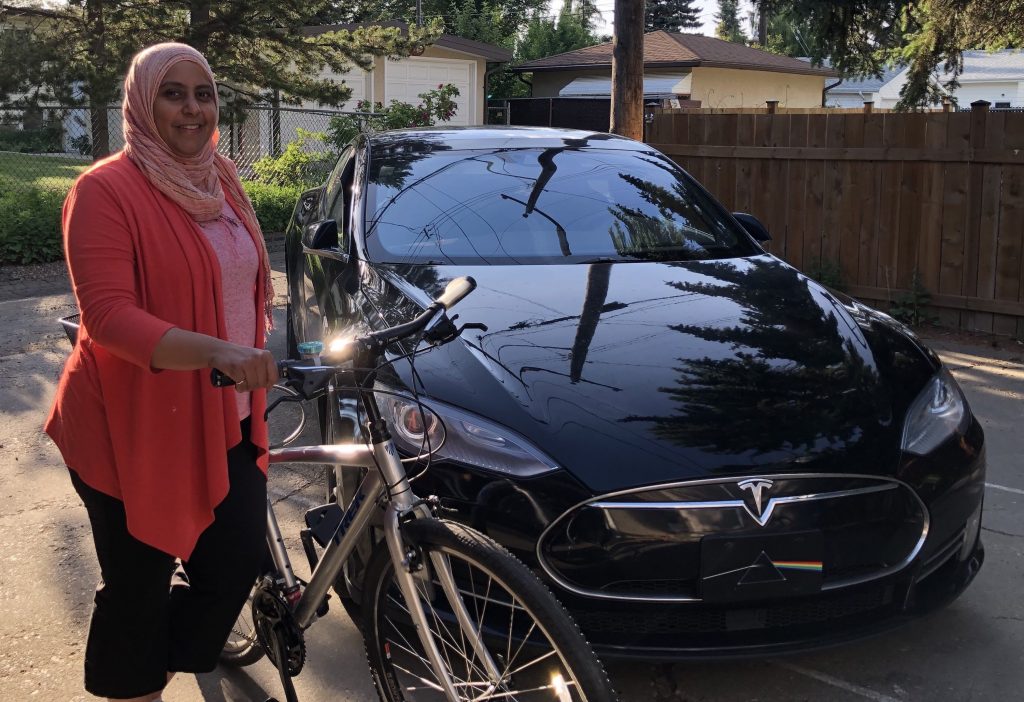
“It sits five adults very comfortably. I have to say as much as I’m not a car person, but it’s a cool car,” says Hassan.
She also has a new appreciation for Elon Musk, founder of Tesla. “He’s got a sense of humor and he’s maniacally brilliant,” she says. There are lots of fun little weird gadgets and the seats can make “some farting noises,” which is a big hit with the kids.
Having helped create Edmonton’s City Plan Hassan is now charged with growth management and finding ways of implementing the ground-breaking City Plan.
Despite the enormity of the challenge of building a zero-emissions city she says: “I’m super excited.”

